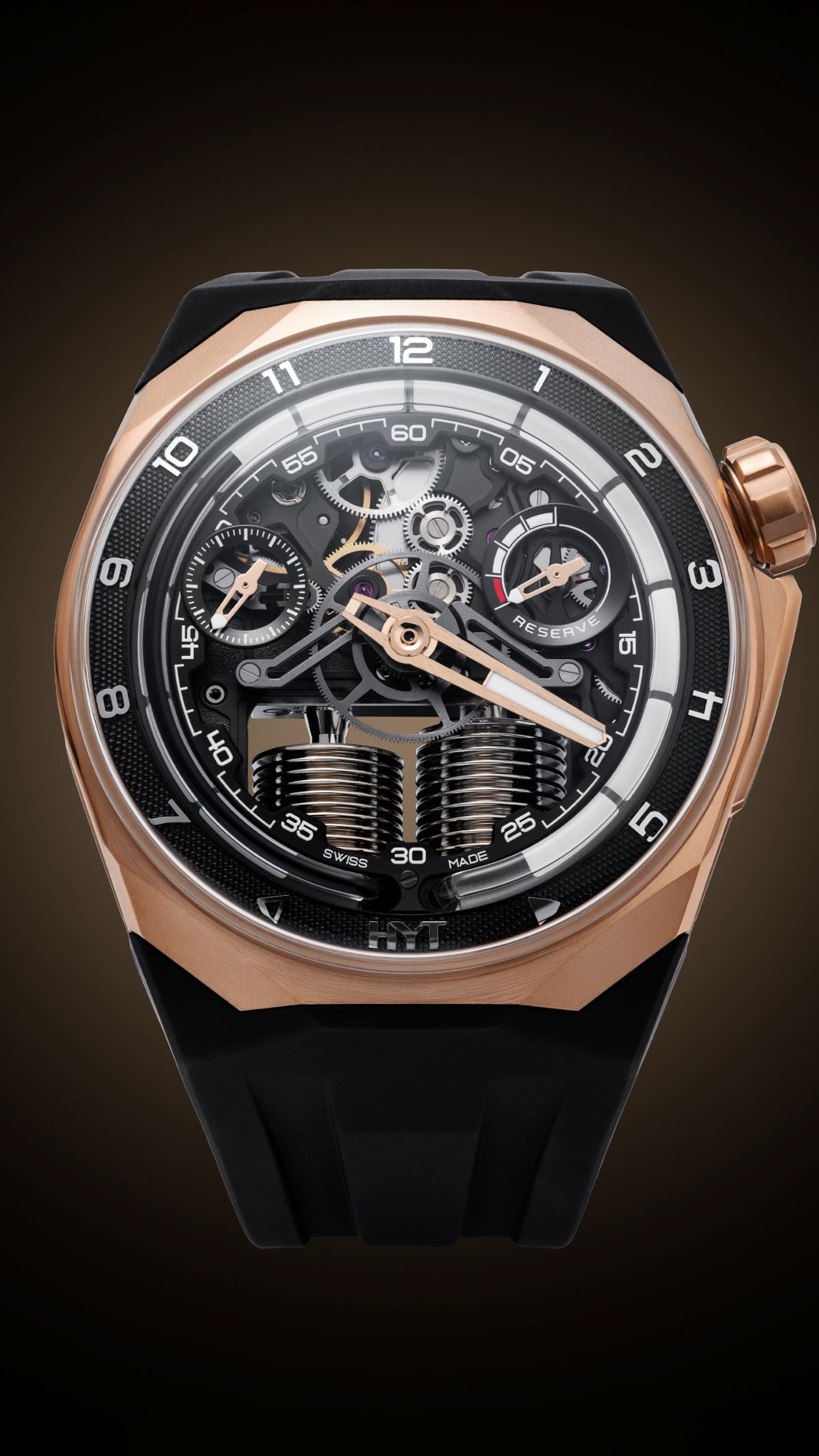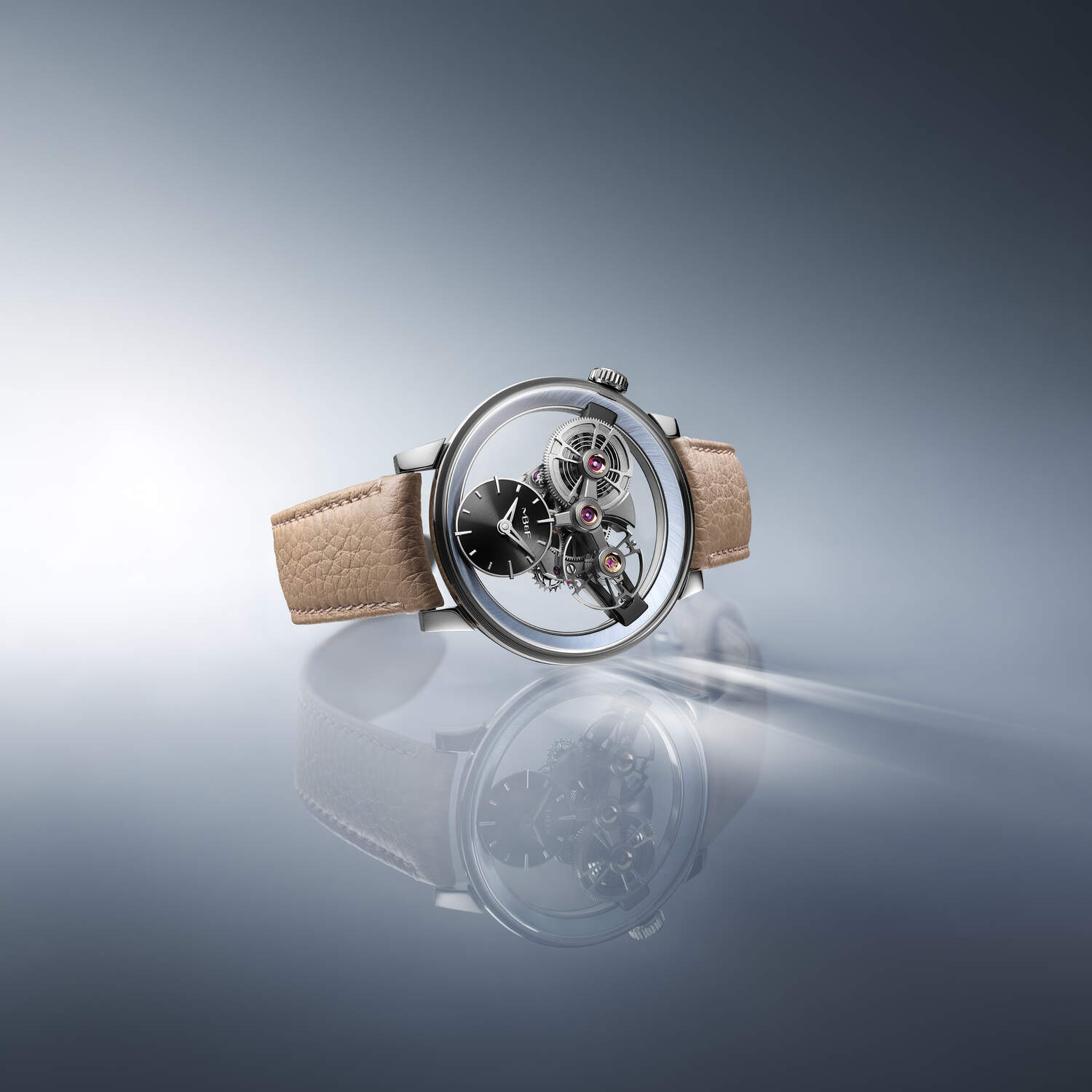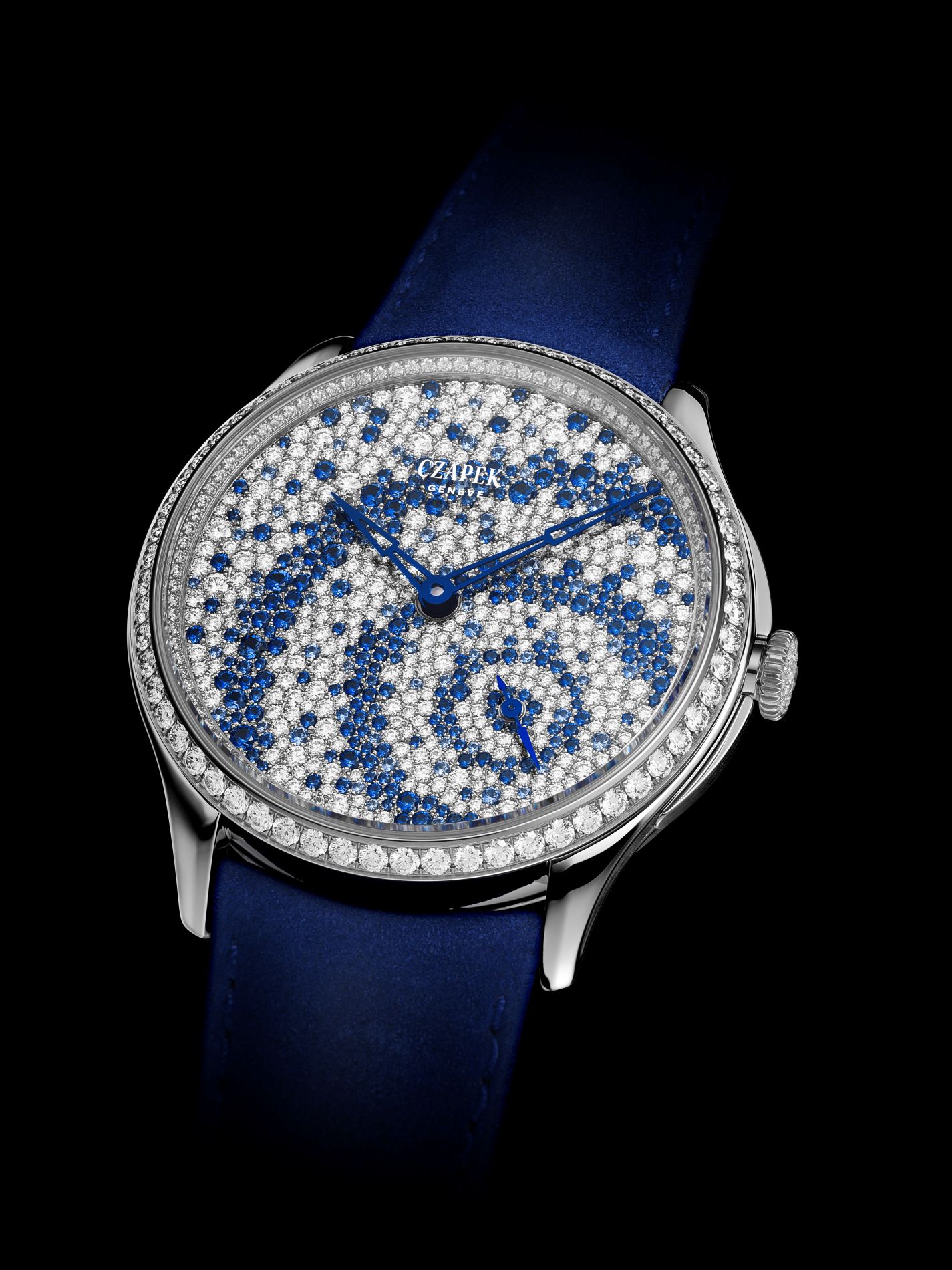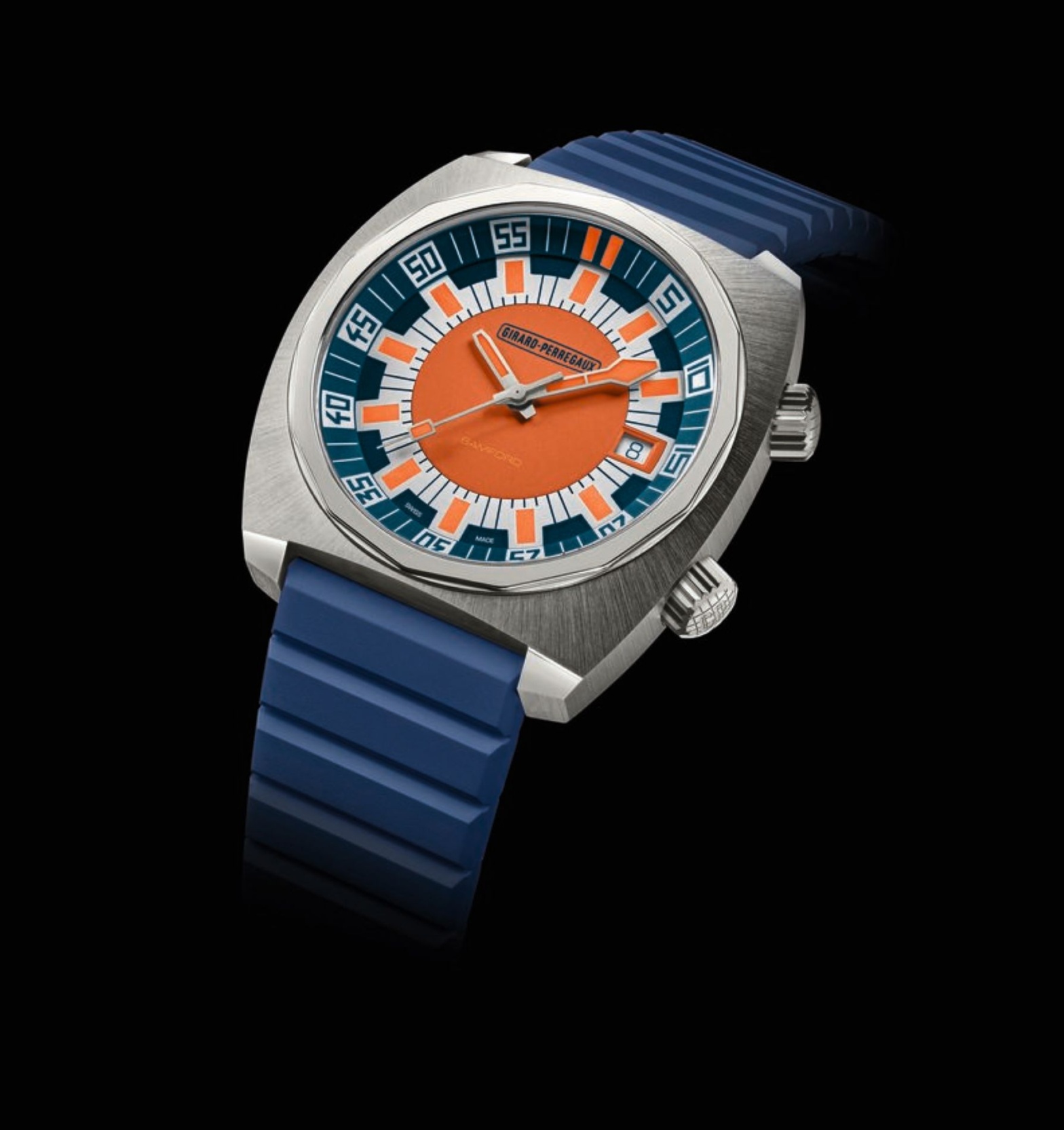Witness a meeting of two minds and generations in exceptional watchmaking as Dominique Renaud, a pioneer of contemporary horology and Julien Tixier, a prodigious young talent, forge a creative alliance.
Their shared ambition is to revisit seven core horological principles, starting with the crucial aspect of energy. Their inaugural creation, a three-hand watch christened ‘Monday,’ showcases their first innovation: a kinetic engine micro-rotor that pushes the boundaries of micromechanics.
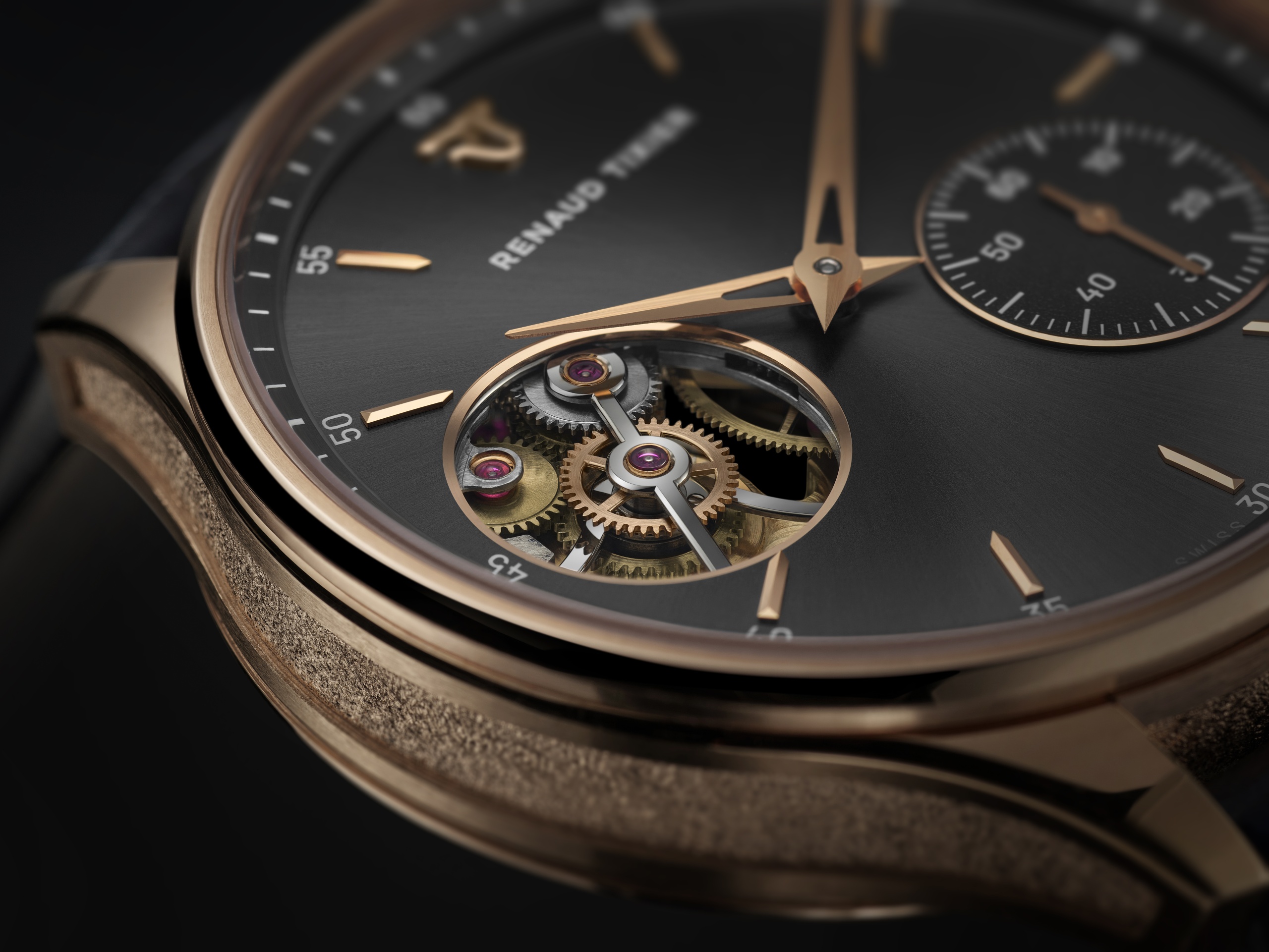
A new watch brand
Based in Nyon, Switzerland, and dedicated to fundamental research in horology, emerges among the peaks of the Swiss independent watchmaking landscape.
Two inventive minds: Dominique Renaud and Julien Tixier are setting out to expand the horizons of Haute Horlogerie, leveraging the extensive skills each has acquired on the journey that led to this moment;
A clear objective: to re-think the fundamentals of micromechanics and apply innovative concepts to fundamental watchmaking principles that have been taken for granted and often remained unchallenged;
The first innovation: the micro-rotor engine, a breakthrough in the key area of energy that significantly enhances winding efficiency and overall energy-generating and transmitting performance.
The first creation: Renaud Tixier’s inaugural ‘Monday’ watch, a 40.8-mm three-hand model that revisits the concept of the micro-rotor with an in-depth exploration of the vital aspect of energy.
Nyon, Switzerland – Monday, 18 March 2024
Today marks the beginning of a new journey in the world of independent Swiss watchmaking, as two exceptional watchmakers, Dominique Renaud and Julien Tixier, combine their expertise and passion to create a laboratory dedicated to horological study and fundamental research. Different in so many ways, they share a deep connection and so it is as surprising as it is inevitable that their paths should converge: Renaud Tixier is born.
Their purpose is evident: the two aspire to continue their collaborative expression in their preferred domain, where they share a profound connection. They understand that the ability to share, coupled with authenticity, lies at the heart of any enduring legacy and fosters the most accomplished watchmaking.
Today, they unite their callings, their exacting standards and unparalleled expertise.
On their agenda are seven fundamental watchmaking principles they aim to revisit. To start with, there is the central issue of energy. Here, Renaud Tixier will first be focusing on the micro-rotor. Small, elegant, and allowing for a better visual appreciation of the movement’s architecture and artistry, this assembly is all too rarely the subject of studies or new developments – despite its potential for enhancing both aesthetics and functionality. Their ambition is nothing less than a complete rethinking of the micro-rotor, optimizing its balance of technical prowess, ergonomic design, and finesse.
The inaugural masterpiece from Renaud Tixier, christened ‘Monday,’ is a testament to this vision. The 40.8mm rose gold case houses a caliber centered around a novel micro-rotor re-envisioned to maximize winding efficiency – a pioneering innovation, devised by Dominique Renaud and realized by Julien Tixier.
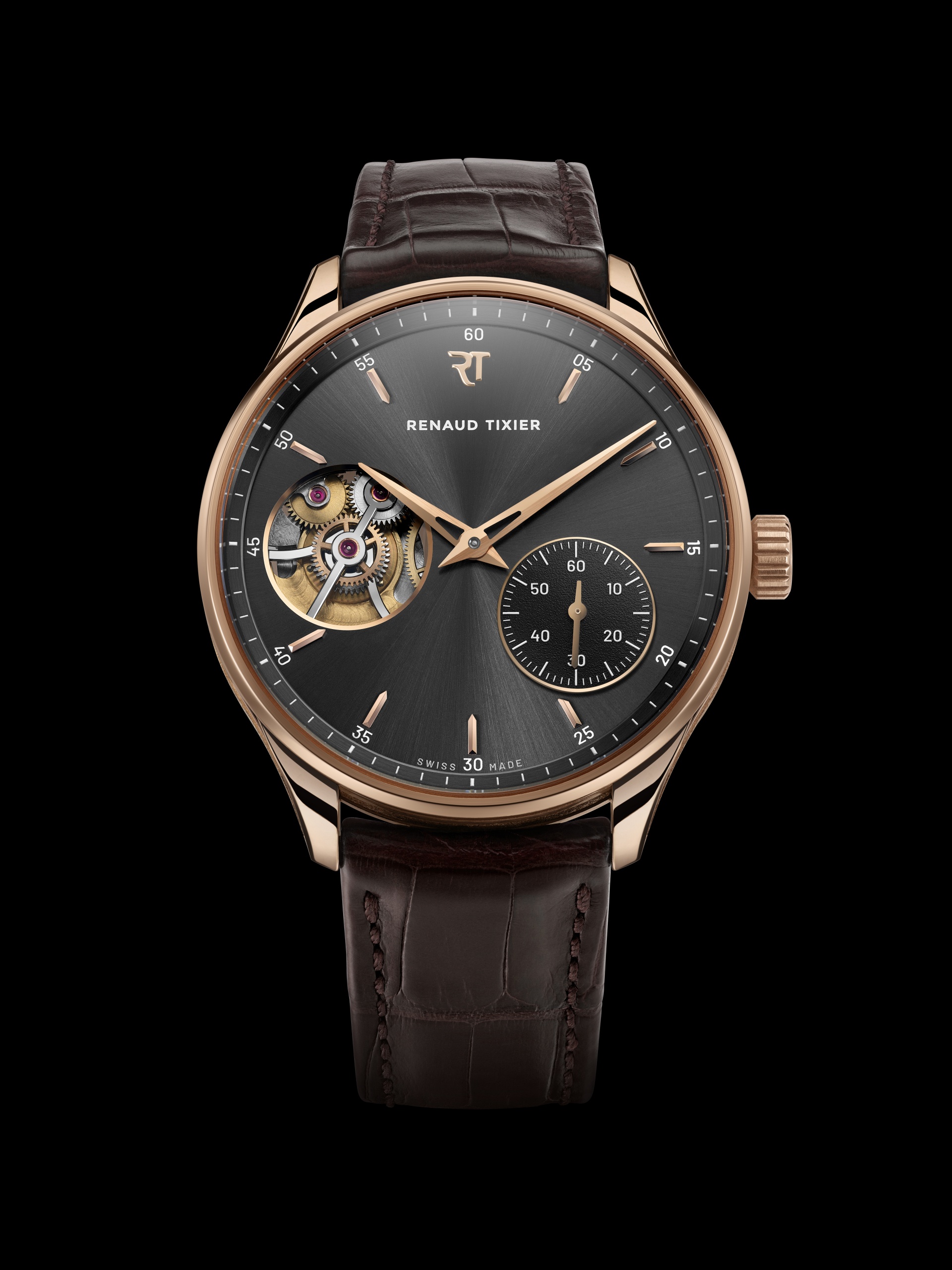
A pivotal encounter, a natural progression
Renaud Tixier epitomizes a unique alliance in the world of horology, the natural next step in the friendship of two extraordinary watchmakers, combining their expertise in watchmaking, invention, and creativity, from conception to execution: Dominique Renaud, an innovator who was instrumental in the renaissance of Haute Horlogerie in the late 1980s; and Julien Tixier, watchmaker extraordinaire and a leading figure of his generation, born in the 1990s.
Dominique Renaud was the driving force behind Renaud & Papi (co-created in 1986 with his friend Giulio Papi), the first-ever independent movement developer and manufacturer in horology. Renaud & Papi was responsible for numerous groundbreaking creations that have marked contemporary watchmaking history, contributing to the growth and glory of prestigious Maisons such as IWC, Lange & Söhne, Jaeger-LeCoultre, Audemars Piguet, and Richard Mille. Around the turn of the millennium, as the firm entered into the orbit of Audemars Piguet, Renaud & Papi was the springboard for many talented watchmakers who have since become key figures in independent creative watchmaking, including Robert Greubel (of Greubel Forsey), Andreas Strehler, and Bart Grönefeld. Following Audemars Piguet’s acquisition of Renaud & Papi in 2000, Dominique Renaud pursued the path of an independent and relocated to the south of France. He returned to Switzerland about twelve years later to focus on developing his own inventions. It was during this time that he met a young watchmaker whose talents left an indelible impression on him: Julien Tixier.
Dominique Renaud and Julien Tixier discover their deep connection at the workbench, combining their talents to create several exceptional timepieces in tandem. The ways in which the two complement each other are as uncanny as they are evident: together, they possess the combined creative power of an R&D laboratory and a manufacturing workshop.
In 2020 and again in 2023, they collaborated to create two exceptional unique timepieces: Tempus Fugit and the simplified and modular secular perpetual calendar for Furlan Marri. The birth of a brand bearing their names was not a surprise, but rather the natural result of a genuine and unique affinity for the art of watchmaking.
In 2023, Dominique Renaud and Julien Tixier decided to formalize their synergy by founding their brand, Renaud Tixier, supported by a production and distribution structure, the Manufacture Dominique Renaud.
A challenging ethos
The Renaud Tixier brand was established with a clear objective: to revisit the fundamentals of mechanical watches and push the boundaries of micromechanics, a field that for centuries was a domain of high technology but whose evolution became constrained by the industrialization of wristwatch manufacturing. For Dominique Renaud and Julien Tixier, this is more than just a goal; it is a mission. Together, they aim to demonstrate that the art of horology is not confined to grand complications and their variations (such as the tourbillon, perpetual calendar, chimes, etc.), no matter how diverse and sophisticated they may be.
Contrary to the practices dominating current luxury watchmaking, their approach is not about showcasing mechanics by playing with every possible facet of sophistication. Instead, they intend to forge new paths by questioning standard practices, theories, and everything that seems to have been taken for granted. These new paths will lead to the creation of pioneering, functional watches—meticulously crafted and made commercially available in series. In short, timepieces that will serve as benchmarks for the entire industry and breathe new life into horological creativity.
Renaud Tixier thus finds its legitimacy in a dual strength: the partnership between Dominique Renaud and Julien Tixier; and the alignment of their work with the broader market. Renaud Tixier is not just another competitor in the realm of high-end watchmaking; it is a source of knowledge and inspiration, reminiscent of a time when micromechanics was at the cutting edge of technology.
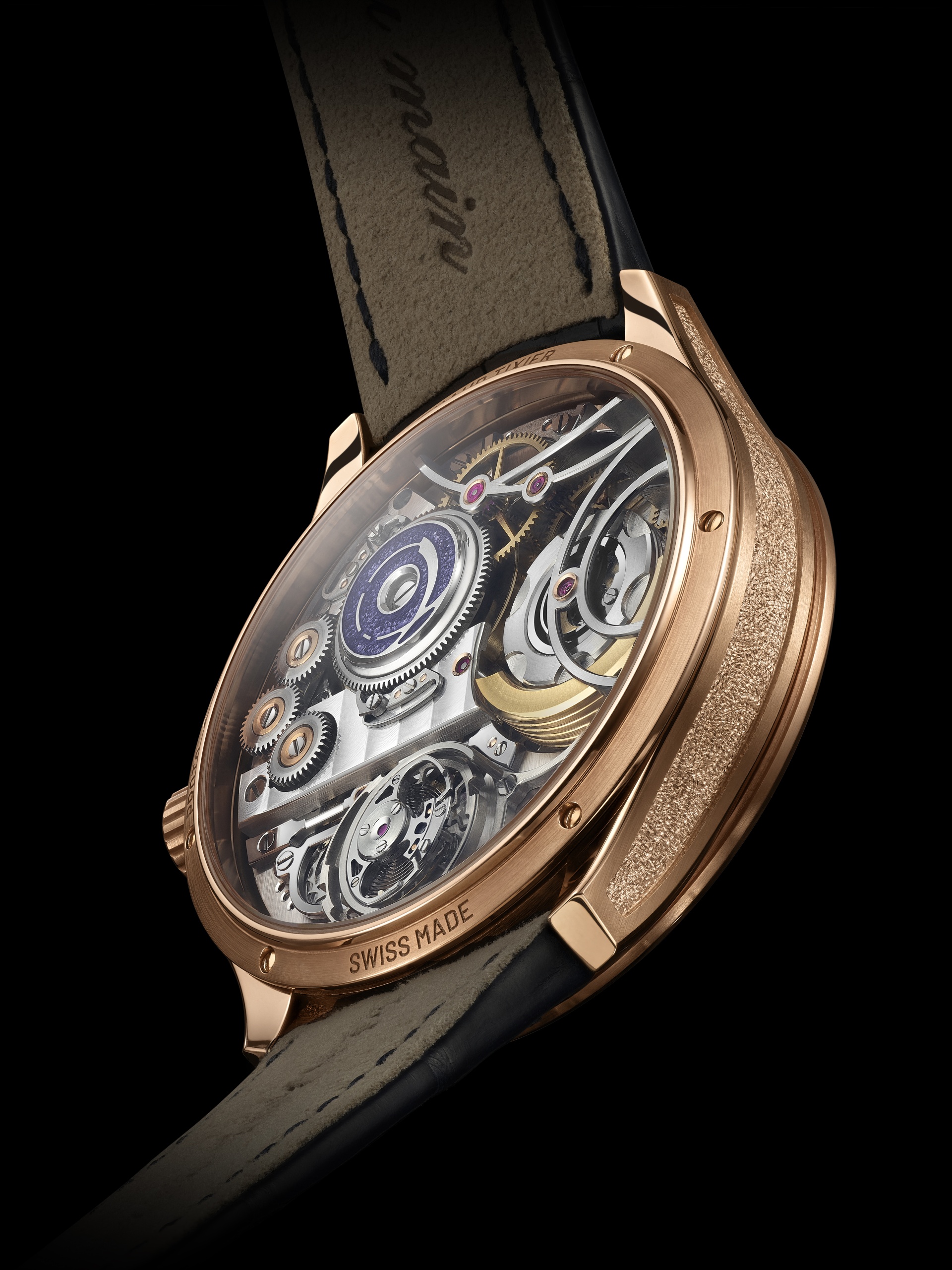
A roadmap
More than just a brand, Renaud Tixier represents a development program, dedicated to reexamining certain fundamentals of mechanical watchmaking. The field of exploration is vast, yet the strategy remains sharply focused. All efforts are channeled into a sequential program consisting of seven key facets, seven chapters, seven pivotal themes of watchmaking technique. Each stage will culminate in an original creation, built around an invention. These inventions, in turn, will focus on improving or refining existing mechanisms, reminding us at every step that the goal is not to replicate the past through classic complications, but to pave the way for the future by setting today’s milestones for tomorrow. This journey through the essentials of micromechanics is symbolized through the seven days of the week, an elementary and universal reference – beginning, logically enough, with ‘Monday’.
A unified approach
Renaud Tixier is the visible tip of a comprehensive horological enterprise, encompassing a development hub and a production center, collectively known as Manufacture Dominique Renaud. The overarching approach sets itself apart from a purely artisanal project. Mastery of craftsmanship, the hand and eye of the watchmaker, remain at the core, yet there’s an added dimension: agility. In other words, there’s a commitment to adapt production capabilities and the integration of trades according to evolving needs.
While the creations inherently remain highly exclusive, produced in limited volumes, the intention is to make a clear impact on the market and thus to act as an active partner to distributors and retailers of fine watchmaking on a global scale. The ambition extends to influencing the watchmaking ecosystem beyond the Renaud Tixier brand, by fostering the development of a production structure open to third parties.
The structure itself— encompassing both the Renaud Tixier brand and the Manufacture Dominique Renaud—is backed by a consortium of private entrepreneurial investors who are well aware of the demands and nuances of the watch sector and market. With the primary goal being the longevity and growth of the enterprise, special attention is given to talent management and honoring the founding members, watchmakers Dominique Renaud and Julien Tixier, as well as all the key figures who have supported them from day one.
Chapter 1: ‘Monday’
‘Monday’, the inaugural creation and first chapter of Renaud Tixier’s journey, delves into the most sensitive aspect of mechanical watches, energy generation, by revisiting a classic of Haute Horlogerie: the micro-rotor. Their first milestone is an invention that transforms a weakness into a strength – through the dancer, a micro-rotor engine at the heart of the winding mechanism.
For this first timepiece, Dominique Renaud chose to tackle the most fundamental aspect of mechanical watches: energy. He went back to the origin of this energy — the rotor of the automatic watch, a mechanism that has seen little development since its industrial standardization in the 1930s and 40s.
He then narrowed his focus to the micro-rotor, which represents a higher level of horological sophistication compared to the larger, mass-produced rotors that are commonly used. The micro-rotor is smaller, more elegant, and does not obscure the mechanics. There is a downside, however: it is a more delicate and less efficient winding system.
Before starting to work on improvements, Dominique Renaud identified the key weakness: to function properly, the micro-rotor requires a large amplitude of movement. Yet, the wristwatch is constantly subjected to opposing forces: all the small jolts naturally caused or encountered by the wearer – like typing on a keyboard or gesturing during a conversation, for instance – that constantly halt the rotor’s acceleration.
This led him to the crucial question: how to harness all the energy generated by the wearer, including restoring the energy from these constant minor shocks that a traditional micro-rotor is unable to convert?
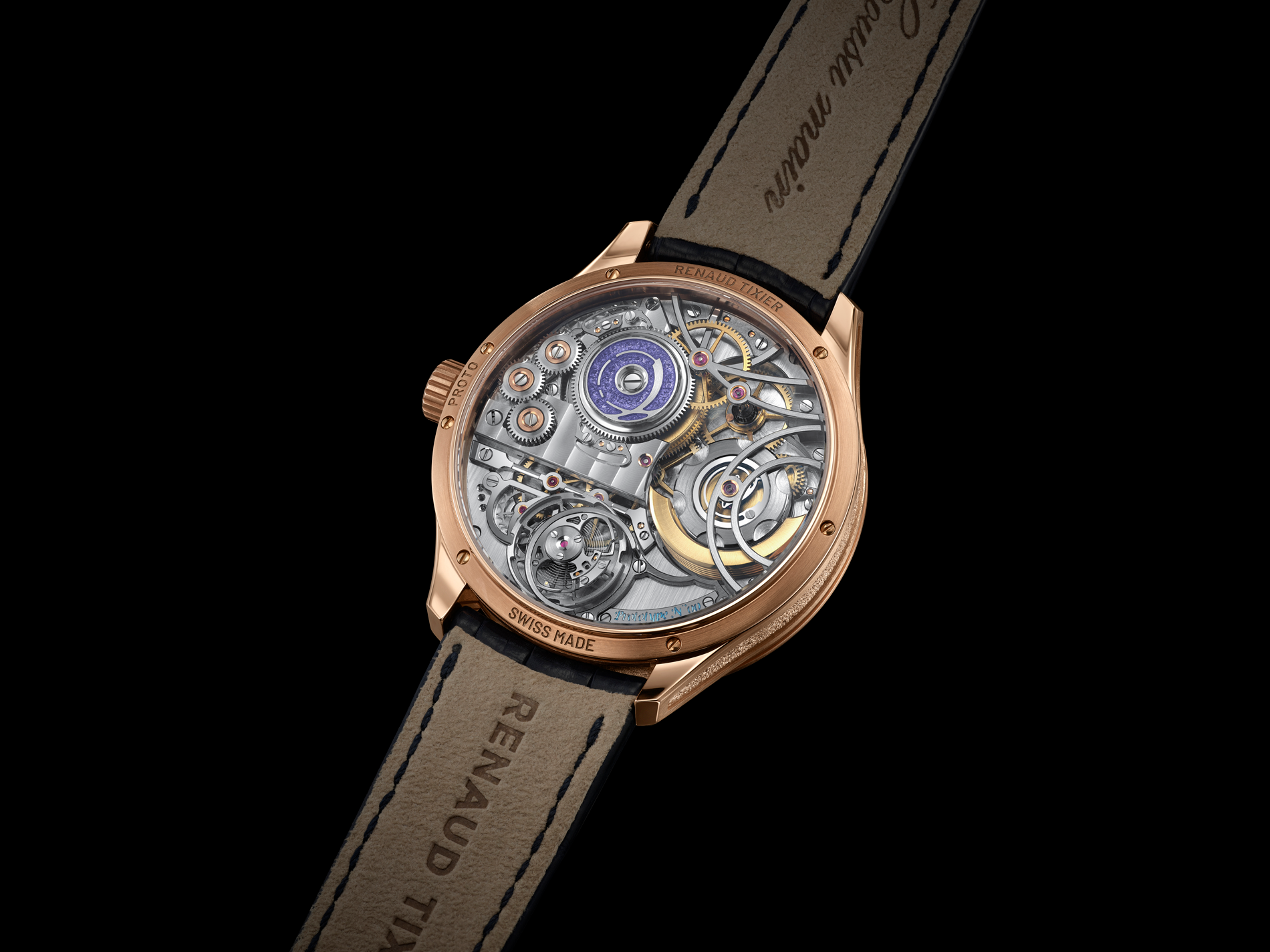
A ‘dancer’ in the spotlight
With the goal of finding a solution within the realm of micromechanics, without relying on any external technology, Dominique Renaud envisaged a watchmaker’s response. He began by searching for a space where he could operate. He found it at the heart of the rotor, where only the periphery is active and the center is, in fact, underutilized. Thus, it was at the center of the rotor that he decided to install the auxiliary mechanism. This mechanism had to fulfill a very simple sequence: to optimize the use of energy released by the rotor and harness even the slightest joule to power the watch. As usual, Dominique Renaud visualized the problem in his mind, and the solution emerged naturally: a central ‘engine’ for the micro-rotor. This propeller, animated by an intelligent and flexible spring, literally dances at the heart of the mechanism, aptly named the “dancer.”
Having established this basic principle, Dominique Renaud further refined his vision by focusing on another ‘trait’ for his ‘dancer’. By adding a ‘leg’ and a ‘foot’, he could make the dancer serve both as an engine and a shock absorber. The corollary is that the system acts as an active safety feature, capable of absorbing the most violent shocks and converting their energy, much like the strings of a tennis racket, which store energy and then release it like a catapult.
The mechanical principle is elegantly simple, while the aesthetic display is as mesmerizing as an automaton – a mechanical choreography led by the ‘dancer’ and its flywheel.
Technically, the ‘dancer’ is a high-flying athlete. It consists of several parts, with complex geometries, even though they perform elementary functions. A large spiral connects the central axis to the innovative mechanism, acting as a catapult. Another spring arm extends from the axis in the opposite direction: a kind of foot with a heel, which hits a stop in the event of a severe shock, serving as the shock absorber.
On the axis, the spring operates like a notched clamp, with an upper jaw shaped like a hanger. This hanger acts as an active safety device: it is rigid under normal conditions and secures flywheel to the axis. In the event of a shock, the foot hits the stop and presses on the hanger, which disengages from the axis and the repositions once the shock has passed and stored energy is released.
Execution
As is customary with Dominique Renaud, the experts and specialists working with him have to get used to navigating terrain that has not yet been mapped by theory. Watchmaker Julien Tixier is already well-versed in this practice. Other members of the collective, engine builder Alexandre Bugnon and prototype watchmaker Sébastien Rousseau, have come to discover this, too.
This is understandable, since, in principle, any element added to a mechanism designed to be as free as possible is a constraint – it adds friction and hinders the mechanism’s proper functioning. However, in this instance, the opposite occurs: the constraint generates energy.
True to form for Dominique Renaud, the invention is first tested on a large-scale model – the calculations come later. And this is where the real challenge begins, as the usual calculation methods for the micro-rotors do not apply here.
On the model, there is no doubt that the mechanism enhances the efficiency of the micro-rotor. This improvement is expected to be confirmed by the watch prototype. By how much? It is too early to say: no existing control tool is capable of quantifying the difference it will make.
Aesthetic choices
The ‘Monday’ project goes beyond mere invention. It involves a completely new caliber that has been designed, developed and created around the ‘dancer’ micro-rotor, showcasing this innovative mechanism – and illuminating its significance. Here, mechanics are at the heart of the design, with the focal point on energy generation – from the micro-rotor to the barrel, and from the barrel to the balance wheel.
The ‘dancer’ takes center stage in this horological performance. Its natural elasticity is echoed by the unusual architecture of the bridges – light and arched like catapults – stretched over the micro-rotor, gear train, and the balance wheel. The finishes set the stage for a contemporary production, with each detail aiming for perfection: beveling by hand, mirror-polished titanium, a palladium balance wheel.
The dial face captures the essence, in a sober and classic display to highlight the timepiece’s inventiveness and make its reading as clear as possible. At nine o’clock, the dial reveals the micro-rotor’s hidden face; a small seconds counter corresponds at four o’clock.
‘Monday’ intertwines its technical narrative within a classical framework. The result is an elegantly simple and pure timepiece, drawing inspiration from neo-classical architecture – a harmonious blend of traditional aesthetics and cutting-edge horology.
All of Monday’s technical discourse is embedded within a classically crafted ensemble: Monday presents itself as an elegant creation, minimalist and pure, drawing inspiration from neo-classical architecture to evince the artistry and engineering behind the caliber – and the innovation.




